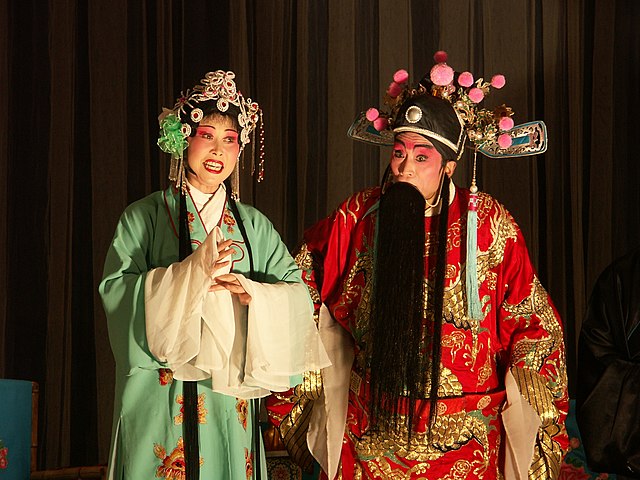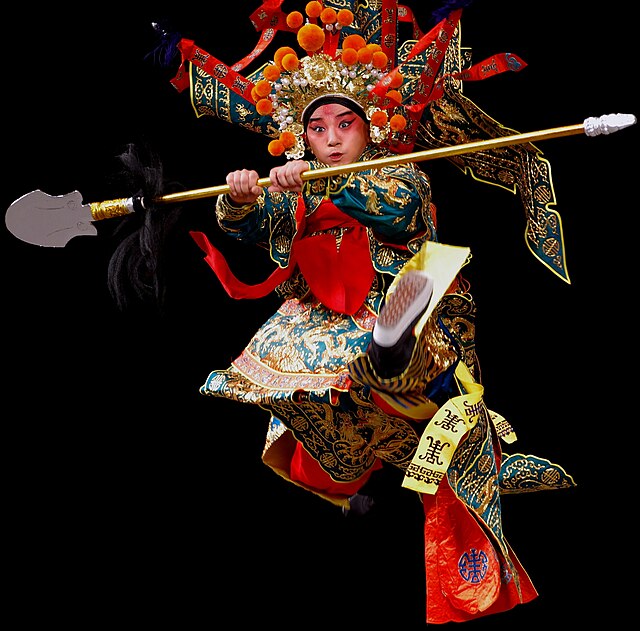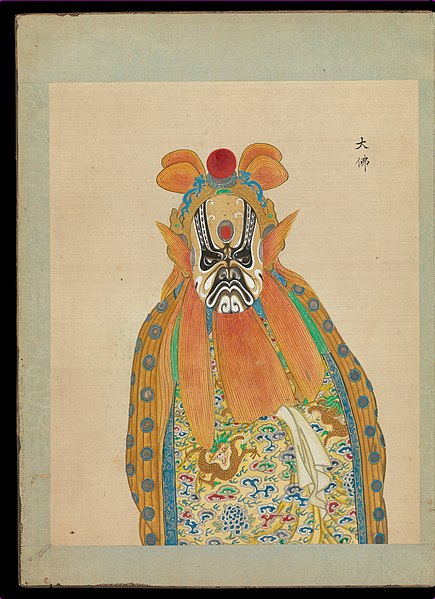Chinese Opera is a form of theatre in China that combines singing, acting, and elaborate costumes. Topics are based on Chinese history, mythology, and literature. Over its historical evolution, it has incorporated various art forms such as music, song and dance, martial arts, acrobatics, costume and make-up art, and literature. It has highly formalized roles, performed by professional actors each trained for specific roles. Exaggerated features and colors make the roles easily identifiable.
A Shao opera performance in Shanghai, China, 2014. This photo shows an acrobatic performer's somersault.
12th century painting by Su Hanchen; a girl waves a peacock feather banner like the one used in Song dynasty dramatical theater to signal an acting leader of troops
Theatre play, Prosperous Suzhou by Xu Yang, 1759
Sichuan opera in Chengdu
Peking opera, or Beijing opera, is the most dominant form of Chinese opera, which combines instrumental music, vocal performance, mime, martial arts, dance and acrobatics. It arose in Beijing in the mid-Qing dynasty (1644–1912) and became fully developed and recognized by the mid-19th century. The form was extremely popular in the Qing court and has come to be regarded as one of the cultural treasures of China. Major performance troupes are based in Beijing, Tianjin and Shanghai. The art form is also preserved in Taiwan, where it is also known as Guójù. It has also spread to other regions such as the United States and Japan.
Peking opera in Shanghai, 2014
The character Sun Wukong at the Peking opera from Journey to the West
One of 100 portraits of Peking opera characters housed at the Metropolitan Museum of Art
The Hegemon-King Bids His Concubine Farewell, one piece of classical Peking opera. The woman, Consort Yu, deeply loved the King Xiang Yu (middle of the stage), and when he failed in a war, she committed suicide for him.








